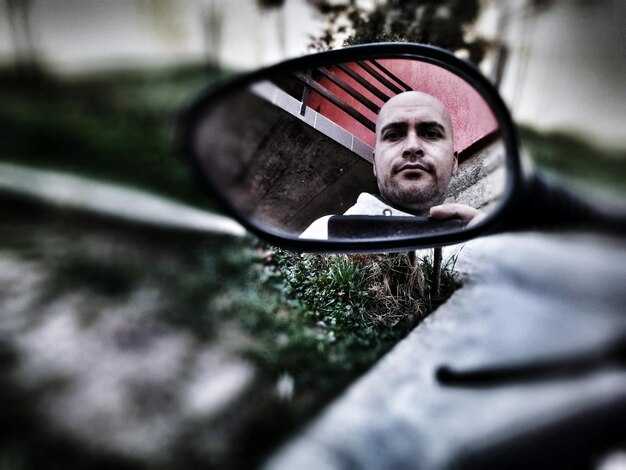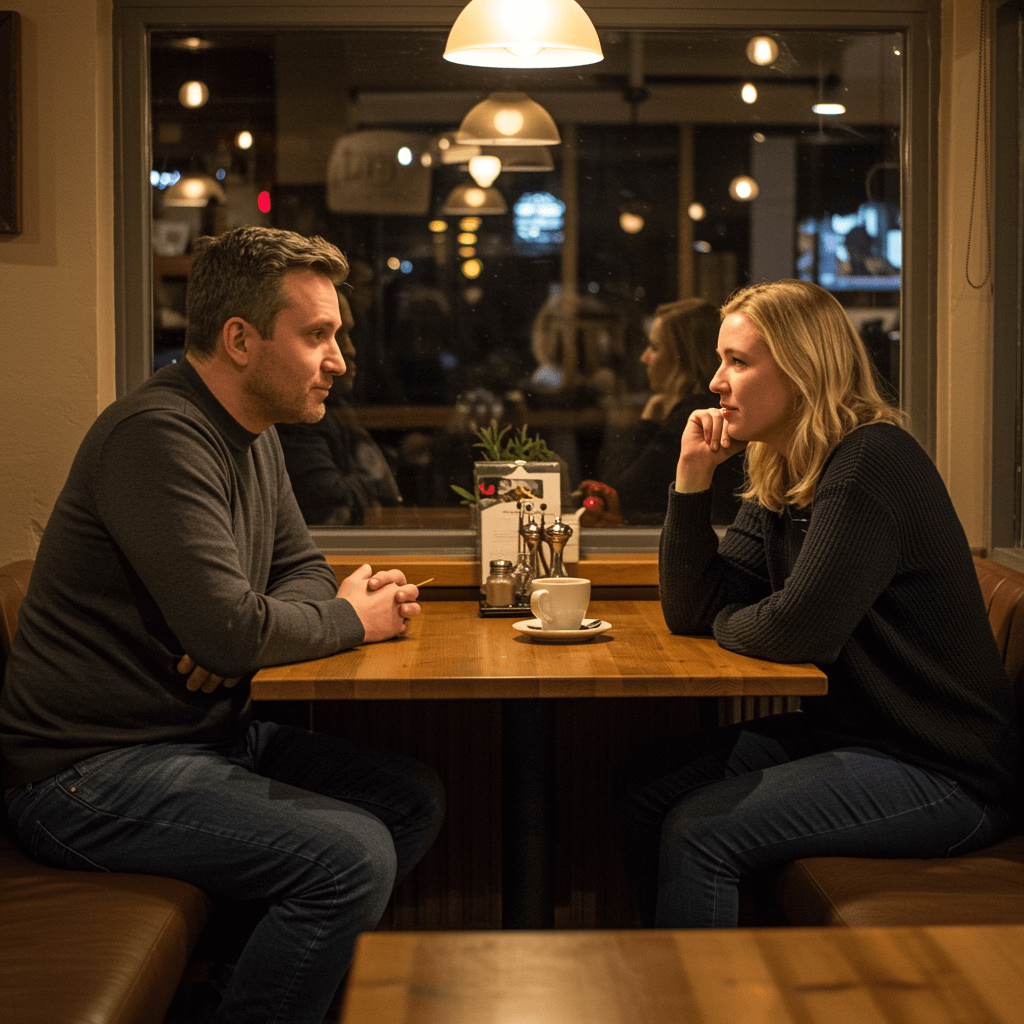I’ve made some truly terrible choices in my life—really odd, self-sabotaging moves when it came to relationships, careers, and the ways I reacted in anger. Have you ever found yourself doing that? You can tell you’re headed in the wrong direction because the people around you give you that worried, judgmental look. You know the expression I mean, right? Yet because there’s agitation stirred up by old wounds, you often can’t recognize in the moment that you’re about to make a harmful choice. Instead of pausing to reflect, you blame the people who are judging you, telling yourself it’s their fault: they just don’t get me. And then you go ahead and do the destructive thing anyway—move in with someone you barely know, marry someone who mistreats you, withdraw completely, or quit a job you actually liked and needed—because your past hurts were triggered and you felt you had to stop the feeling immediately. Have you ever experienced that? Those are the choices that alter the direction of your life. They block you from what you truly want and leave you stuck and vulnerable to further trauma. I call these trauma-driven decisions. You genuinely believed you were making the right move, but your trauma distorted your view. If you’ve made decisions that were guided by past trauma, I want to help you break the pattern. How can you tell when it’s happening? How can you learn to choose differently, even while you’re still in the earlier stages of healing? A trauma-driven decision is one made on something important without connection to your real desires, values, or long-term interests. In the heat of the moment you might think, “I’m trapped,” or “I have to take whatever I can get or I’ll end up with nothing and be alone.” Or you yield to pressure on a financial choice even though, somewhere inside, you know it’s not wise. Why do we behave this way? Often it’s because of dysregulation—the chaotic, off-kilter state of your nervous system that you’ve likely heard me mention before. You experience it when a trigger leaves you flustered, your mind goes blank, you react with intense feelings, or you numb out. Many systems in the brain and body slip slightly out of sync during dysregulation, affecting mood, thought, and bodily responses. This scrambled state especially interferes with decision-making. Research from the University of Wisconsin shows that people who suffered abuse or neglect as children can have their reasoning short-circuited by present stressors. A current stressor can blunt your ability to weigh risks properly, making it hard to see the real downsides of a choice—at least in the moment—and simultaneously intensifying the emotions that push you forward. Picture being on a first date: you know you shouldn’t rush, but simply deciding what to do as the night ends can shut down your capacity to judge risk. Your emotions might surge, whispering, “This will be amazing, nothing to lose,” and suddenly fuzzy decision-making takes over. This same pattern shows up in buying a TV, telling your boss off, or telling a small lie that, in the moment, seems harmless. With childhood trauma, your normal internal gauge for good versus bad ideas gets muted; you cannot accurately sense potential consequences. From the outside, it looks like plain impulsivity—and it is impulsive—but that doesn’t capture the internal experience. I want you to pay attention to those inner sensations because they can warn you when a trauma-driven decision is forming. Noticing them creates a chance to pause, use grounding tools to reregulate, and get a reality check. Childhood trauma can push us to make major life choices for reasons other than our true wellbeing. Trauma distorts reality and drives decisions. Anger, shame, and self-hatred all play roles. When trauma brings up intense feelings, we become willing to do almost anything to stop the pain. Childhood wounds can create a constant emotional backdrop of desperation just to feel okay, leading you to clutch at rash choices that feel like survival or the only shot at having that one thing you never had—so it seems worth taking regardless of the cost. I get that; I’ve been there. You might make a ridiculous sacrifice to feel validated for a short while—to briefly taste dignity or legitimacy—knowing on some level it won’t really solve things but at least it’s something instead of nothing. In the moment of a destructive decision, that’s often how it feels. Sometimes a trauma-driven decision looks like saying hurtful things or cutting people off because the trigger tells you, “See, everyone does this to me and I must stop it.” So you lash out or go silent. It usually wounds you more than others, though such decisions can certainly harm people who depend on you. Now, how can you recognize when a decision is being steered by trauma? Here are some signs. First, you tell yourself a situation might be problematic but you rationalize it by thinking, without this relationship no one will ever love you, or no other employer will hire you, or no other landlord will rent to you. You’re just taking whatever’s in front of you—what I call “crap fit.” Alternatively, you bolt from something that has been a good part of your life—a job, relationship, or friendship—out of anger, shame, panic, or to make someone understand how it feels. Ever done that? Second, you entertain thoughts of hurting yourself. That’s the ultimate trauma-driven decision—and if that’s happening now, stop watching this and reach out for help immediately. If online therapy is an option for you, you can contact BetterHelp (there’s a link below). If you have a therapist, call them. If you need a hotline, call it. First and foremost, take care of your safety. Never harm yourself—that’s as clear an example of a trauma-driven decision as there is. Another sign is doing what someone else wants simply because you don’t yet have the strength to say no. This can show up as people-pleasing, being coerced, or genuine uncertainty about your own desires. Childhood trauma can make it hard to know what you want in another person’s presence—especially when others express their needs forcefully—and you might feel undeserving of a voice in joint decisions because your trauma whispers that you don’t deserve to be heard. You might also be making trauma-driven choices if your standards of acceptability swing wildly—one day you say you won’t tolerate something, the next you make excuses. We’ve all been there, but it’s a red flag. Another sign is accepting unacceptable circumstances with the hope that someday the other person will change, you’ll change, or your options will improve. Or, when facing a difficult choice, you find yourself avoiding honest conversations because you fear you’ll be exposed or called out—so you hide, lie, or omit details to dodge judgment. That shame is often a clue you know the decision isn’t a good one. So what can you do? Here are seven concrete steps. One: write down what you genuinely want in life—don’t censor yourself just because some things seem impossible. Keep this list as a touchstone when stress, dysregulation, or pressure to decide quickly tempts you into settling for less. Two: slow your decision-making. People with childhood trauma usually benefit from extra time to think through big choices, especially when strong emotions like fear, lust, or anger are involved. Those intense feelings interfere with clear judgment. Three: run your decisions past a trusted friend, mentor, or therapist—someone with life wisdom who truly has your best interests at heart. Four: do your homework—research your options. Do due diligence: look things up online, ask people who have faced similar choices, and gather the facts you need. Don’t rush. Five: when another person is part of the decision, find the courage to voice your concerns about moving forward. Sometimes one honest admission of fear or doubt breaks the illusion between two people and clears the way for what’s real, which is always where you want to be. Six: if you must decide on your own, imagine someone in your life—living or dead—who loves and cares about you, and ask, given what I know now, what would they advise? Or ask, what would someone without childhood trauma do? Sometimes I ask myself that: what would “normal” people do? Do I need more time to figure out whether this is truly right for me? Is this good for my children? If you have kids, their wellbeing is usually a reliable guide because what’s good for them tends to be good for you; I tend to hold my children to very high standards, and often those are the standards I actually need for myself too. Seven: while you’re working it through, check in with yourself. Ask whether there’s something you know but are refusing to see because it would break the momentum. Are your next steps leading toward what you truly want, or are you just keeping options open? Is there anything about the choice that bothers you? Name it now. Finally, with any worrying option, pause and ask whether you can choose differently later. Picture the steps you’d take and what it would feel like to change your mind—walk through that scenario. Make changing your mind familiar and acceptable to yourself. Sometimes we must get used to the idea that reversing course is possible and doable. One powerful aspect of healing from trauma is reclaiming choice. That means when you make a lapse—and we all do—you’ll be better able to recognize it, correct it, and return to your path without too much delay. It helps to know the signs that your thought process is being driven by trauma. If you’d like, there’s a list of indicators that childhood PTSD might still be affecting you; you can download a copy by clicking right here. See you soon. [Music]

Practical tools to use in the moment: try the STOP technique—Stop, Take a breath, Observe what you’re feeling and thinking, Proceed intentionally. Use a simple grounding exercise (5-4-3-2-1): name 5 things you can see, 4 you can touch, 3 you can hear, 2 you can smell, 1 you can taste. Or practice box breathing: inhale for 4 counts, hold 4, exhale 4, hold 4, repeat until you feel calmer. Even one or two minutes of a sensory grounding or breathing practice can reduce the intensity of a trigger and restore some clarity.
A short decision checklist you can use when emotions are high: 1) Pause—can this wait 24–72 hours? 2) What would I advise a loved one to do? 3) What are three likely consequences (best, worst, and most likely)? 4) Is this aligned with my values list? 5) Who can I consult for a reality check? Writing down answers helps move choice from reactive to reflective. Consider a decision journal: note the trigger, your felt sense (what you felt in your body), the choice you considered, and the outcome. Reviewing this over time reveals patterns and builds wiser habits.
Practical scripts and boundaries: if you need time, say, “I need to sleep on that and get back to you in 48 hours.” If you need distance, say, “I can’t meet this week; I need some space to think.” If someone pressures you, try, “I hear you, but I need to decide what’s right for me.” Practice these lines so they feel easier to use when you’re stressed.
Treatment and longer-term supports: therapies like DBT (dialectical behavior therapy) and CBT (cognitive behavioral therapy) teach emotion regulation and decision skills; EMDR or trauma-focused CBT can help process the wounds that trigger impulsive choices. Peer support groups and trusted mentors also strengthen your ability to pause and reflect. If you’re ever thinking about harming yourself, contact emergency services or your local crisis line immediately, or reach out to a clinician or trusted person right now. Your safety is the priority.
Finally, be gentle with yourself. Reclaiming choice is a skill built over time. Start with small decisions to practice these tools, celebrate progress, and forgive setbacks. Each pause, each check-in, and each honest conversation is a step toward making choices that serve your true life—not your trauma.


 Stop Letting Your Trauma Drive Decision-Making">
Stop Letting Your Trauma Drive Decision-Making">





 ">
">
 If You Notice These Behaviours, RUN — They’re Toxic">
If You Notice These Behaviours, RUN — They’re Toxic">
 How to Tell It’s Time to Leave Your "Safe" Relationship">
How to Tell It’s Time to Leave Your "Safe" Relationship">
 If you’re the GIVER, Don’t Neglect THIS!">
If you’re the GIVER, Don’t Neglect THIS!">
 Why You Should Assume Avoidants ALWAYS Come Back">
Why You Should Assume Avoidants ALWAYS Come Back">
 What Does It Mean If Losing Friends Is a Pattern?">
What Does It Mean If Losing Friends Is a Pattern?">